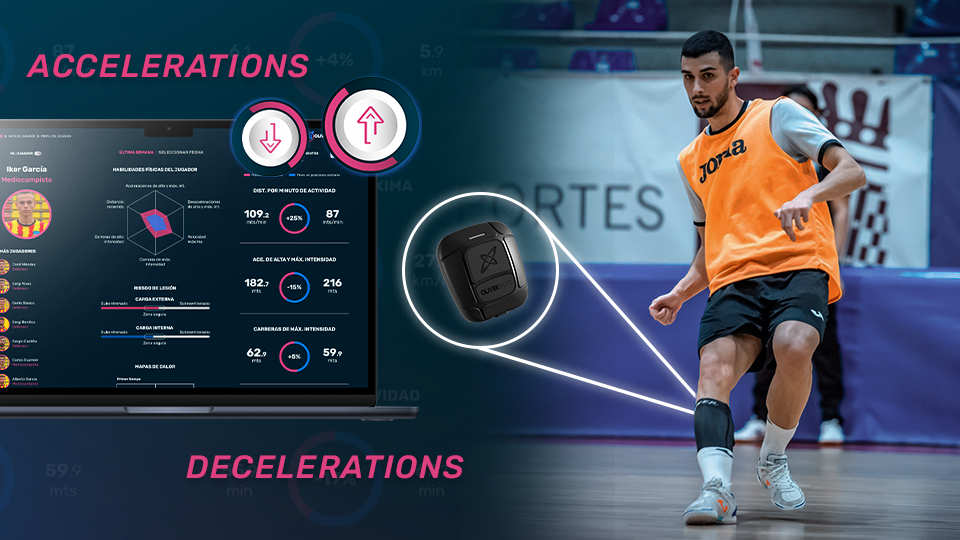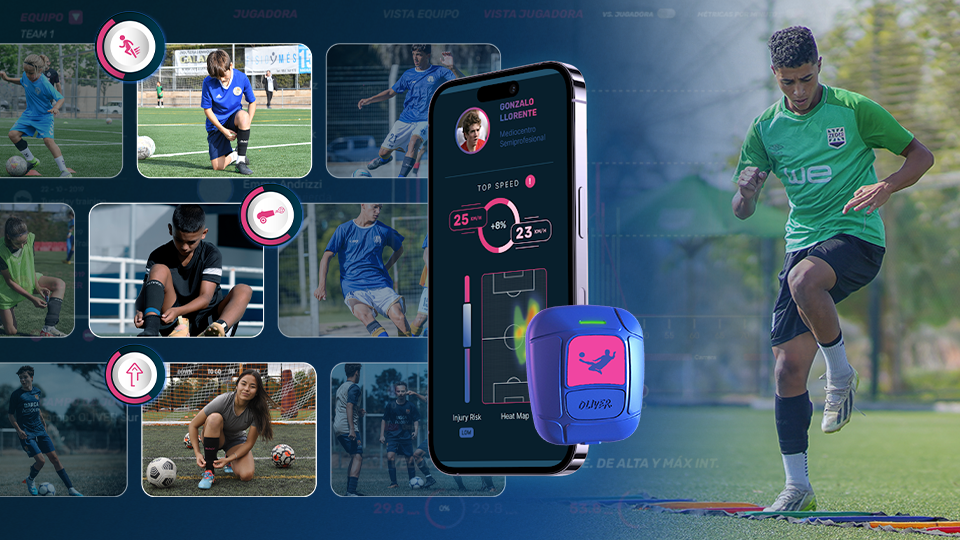Technology in Futsal: How to Measure Accelerations and Decelerations

Futsal is a sport played at high speed and in small spaces. Every second counts, and every explosive movement can define a play. In this context, accelerating and decelerating efficiently is one of the most decisive physical abilities for performance.
However, these actions are also among the most physically demanding. That’s why accurately measuring and analyzing them has become an essential part of the work for strength coaches, trainers, and performance analysts.
This is where OLIVER PRO comes in — a sports performance monitoring technology designed to turn acceleration and deceleration data into useful insights that help optimize the physical preparation of futsal players.
What Are Accelerations and Decelerations?
In futsal, players are constantly starting, stopping, turning, and changing direction. These actions generate explosive demands that are not always reflected in total distance covered or top speed.
That’s why OLIVER PRO classifies actions based on their intensity, allowing for a more detailed analysis of real effort:
-
High-intensity accelerations: 2 to 3 m/s²
-
Maximum-intensity accelerations: more than 3 m/s²
-
High-intensity decelerations: −2 to −3 m/s²
-
Maximum-intensity decelerations: less than −3 m/s²
These metrics help understand not only how much a player moves but how they move — how many times they accelerate or brake forcefully, in which areas of the court, and how their body responds to those demands.

Why Are They So Important in Futsal?
Unlike 11-a-side football, futsal is characterized by constant repetition of explosive actions. Every transition, press, steal, or change of pace involves intense accelerations and decelerations.
By analyzing these movements, coaches can:
✅ Evaluate a player’s power and reactivity.
✅ Measure the real physical demand of each session or match.
✅ Adjust training loads based on effort levels.
✅ Prevent overload injuries or muscle fatigue.
✅ Design specific drills to improve starts, stops, and changes of direction.
In summary, these metrics connect physical performance with tactical and technical execution, offering a complete view of a player’s role within the game.
How OLIVER PRO Measures Accelerations and Decelerations
OLIVER PRO is specifically designed to accurately capture the explosive, short movements characteristic of futsal. Some of its key advantages include:
⚙️ Accurate measurement in small spaces: Ideal for futsal, where every meter counts.
📊 Customizable intensity thresholds: Parameters can be adjusted for youth, amateur, or professional levels.
💪 Injury prevention: Detects load spikes in accelerations and decelerations, helping plan optimal recovery.
🧠 Player development through awareness: Athletes learn to interpret their own data, understand how their body responds to stress, and build a professional mindset from an early age.

What the Metrics Reveal
In a professional futsal match, players perform dozens of intense accelerations and decelerations per minute. Without measurement, it’s nearly impossible to grasp the full workload.
With OLIVER PRO, teams can identify:
⚡ Which players have the greatest explosive acceleration capacity.
⏱️ Who can maintain intensity throughout the game.
📉 When fatigue or power loss occurs.
🔁 How each player recovers between high-intensity efforts.
These insights allow coaches to train with science and precision, adapting weekly plans to the real physical demands of competition.
Conclusion
Futsal demands precision, speed, and total body control. Accelerations and decelerations are the physical heart of the sport, and measuring them accurately is key to maximizing performance while safeguarding player health.
OLIVER PRO turns this data into actionable knowledge — tracking frequencies, distances, individual progress, and group comparisons.
A tool built for coaches and performance specialists who want to raise their team’s competitive level and develop stronger, smarter, and safer players.


